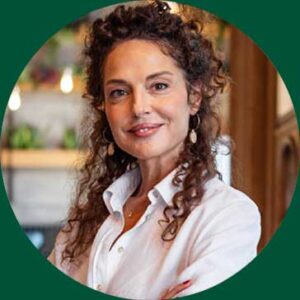Election Cycles and Consumer Confidence: What SMBs Need to Know
As election season approaches, the air is filled with political advertisements, debates, and discussions surrounding election cycles and consumer confidence. For small and medium-sized businesses (SMBs), this period offers more than a democratic spectacle—it’s an opportunity to analyze consumer behavior. Election cycles profoundly influence consumer confidence, shaping spending habits and economic activity. By understanding these dynamics, SMBs can adapt their marketing and sales strategies to stay ahead.
Economic Uncertainty and Consumer Confidence
Election cycles often bring economic uncertainty. Consumers, uncertain about how election outcomes might affect the economy, tend to become cautious with their spending. This is especially true during contentious elections, where policy outcomes might significantly impact areas like taxes, healthcare, and job markets.
For example, in the months leading up to the 2020 U.S. presidential election, consumer confidence dipped due to concerns over election impact on the economy, as the public grappled with potential significant changes in economic policy. This led many consumers to save rather than spend, slowing sales in sectors like retail, real estate, and luxury goods.
Media’s Role in Consumer Confidence
The media plays a significant role in shaping public perception during election cycles, influencing media’s role in consumer confidence. Continuous coverage of political developments, economic forecasts, and polling results can either bolster or dampen consumer confidence. Positive coverage suggesting stability and growth encourages spending, while negative coverage highlighting potential downturns leads to cautious financial behaviors.
For instance, during the 2016 U.S. election, media discussions about potential trade wars and economic instability led to a temporary dip in consumer confidence. Many SMBs experienced a slowdown in sales as consumers adopted a “wait-and-see” approach to purchases.
The Effect of Election Outcomes on Stock Market and Spendin
Election outcomes can have a direct impact on the stock market, demonstrating the effect of election outcomes on stock market, which, in turn, affects consumer confidence and spending. A favorable election outcome often results in a stock market rally, increasing perceived wealth and encouraging spending. Conversely, an unfavorable outcome can lead to market declines and reduced consumer spending.
For example, after the 2012 U.S. presidential election, the stock market responded positively to President Obama’s re-election, leading to a short-term boost in consumer confidence and increased spending, particularly in retail and housing sectors.
Adjusting Marketing and Sales Strategies for Election Cycle
1. Monitor Consumer Sentiment in Election Periods
To adjust marketing strategies effectively, it’s crucial to monitor consumer sentiment during election cycles. Tools like consumer confidence indexes, social media sentiment analysis, and customer surveys can offer insights into the mood of your target audience.
For example, if consumer confidence is low, focus marketing efforts on value-driven messaging that emphasizes affordability. Conversely, high consumer confidence presents opportunities to promote premium products catering to discretionary spending.
2. Flexibility in Marketing Campaigns During Election
Election cycles are unpredictable, and public sentiment can shift quickly. Maintain flexibility in your marketing campaigns by preparing for various scenarios.
For instance, if a candidate’s platform includes tax cuts, prepare campaigns highlighting luxury goods. Alternatively, if the platform involves increased taxes or regulations, focus on promoting cost-effective, essential products.
3. Leverage Digital Marketing and Social Media to Engage Consumers During Elections
Consumers are highly engaged with digital platforms during election cycles, especially social media. SMBs can use this period to connect with their audience and tailor messaging to current events.
For example, a local café could run a social media poll asking customers how they feel about the upcoming election. Offering discounts to participants can drive engagement and foot traffic during periods of low consumer confidence.
4. Emphasize Value and Reassurance to Boost Consumer Confidence
In uncertain times, consumers seek stability and trustworthiness. Marketing messages should emphasize reliability, long-term benefits, and value.
For instance, an electronics store could highlight the durability of its products and offer extended warranties or flexible payment options, providing reassurance to hesitant buyers.
5. Plan for Post-Election Scenarios
Beyond the election, plan for post-election consumer behaviors. A favorable policy environment might boost consumer spending, whereas uncertainty might require continued focus on savings and value.
For example, if a new administration is expected to implement tax cuts, ramp up marketing efforts to capitalize on increased consumer confidence. Conversely, emphasize cost-saving promotions if economic uncertainty looms.
Case Study: Navigating an Election Cycle
During the 2016 U.S. presidential election, a local clothing boutique noticed dipping consumer confidence as the election approached. Instead of reducing marketing efforts, they adapted their strategy:
- Monitoring Sentiment: They gauged consumer caution through social media and news.
- Adjusting Messaging: Pivoting campaigns to highlight affordable, versatile basics.
- Leveraging Digital Media: Running targeted ads emphasizing practicality and engaging with customers directly on social media.
Post-election, the boutique adjusted inventory to align with emerging trends. By staying proactive, the business maintained steady sales during a challenging period.
Staying Ahead During Election Cycles
Election cycles present challenges and opportunities for SMBs. By monitoring consumer sentiment, maintaining flexibility, leveraging digital tools, emphasizing value, and planning for post-election scenarios, SMBs can navigate these periods confidently.
Tools like MRGN, which provide financial insights without the need for a CFO, help SMBs stay agile and informed during these uncertain times. By combining strategic planning with robust financial management, SMBs can adapt and thrive, no matter the political landscape.





